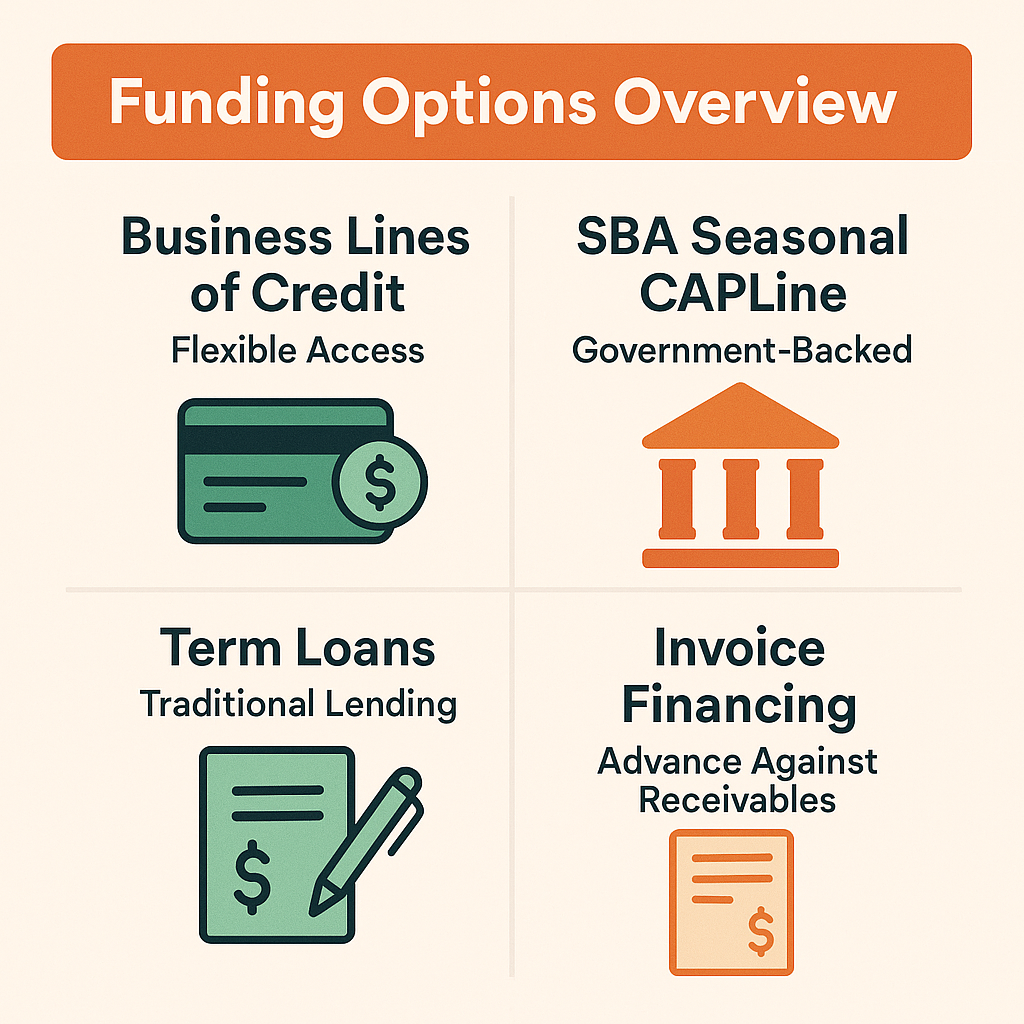Seasonal businesses face unique financial challenges that traditional financing often overlooks. From ice cream shops bustling in summer to tax preparation services thriving during filing season, these enterprises need capital solutions that align with their fluctuating revenue cycles. The key lies in securing funding for seasonal businesses before peak periods arrive, ensuring adequate cash flow to capitalize on high-demand windows while sustaining operations during slower months.
Essential Funding Options for Seasonal Operations

Finding the right funding for seasonal businesses requires understanding options that accommodate irregular income patterns. Various financing products have been specifically designed to address the unique needs of businesses with cyclical revenue streams.
- Business Lines of Credit: These provide flexible access to funds when needed, allowing you to draw capital during slow periods and repay during peak seasons without fixed monthly payments on unused portions
- SBA Seasonal CAPLine: A government-backed program specifically designed to finance seasonal increases in accounts receivable and inventory, offering favorable terms for temporary working capital needs
- Term Loans: Traditional lending that may work for seasonal businesses with strong credit profiles, providing lump sum funding that can bridge capital requirements between seasons
- Invoice Financing: Particularly useful for B2B seasonal companies, this option advances funds against outstanding receivables to smooth cash flow gaps during transition periods
Strategic Timing for Peak Season Needs
Success in securing funding for seasonal businesses often depends more on when you apply than which product you choose. Strategic timing can make the difference between having adequate capital for peak season demands and scrambling for emergency funding when demand surges.
- Apply Months in Advance: Submit financing applications well before your busy season begins, as lenders typically require several weeks for processing and approval of business funding requests
- Leverage Off-Season Planning: Use slower periods to gather financial documentation, improve credit scores, and research lenders who understand seasonal business models and cash flow patterns
- Build Relationships Early: Establish banking relationships during stable periods rather than when you desperately need capital, as existing relationships often lead to better terms and faster approvals
- Create Seasonal Projections: Develop detailed financial forecasts showing expected peak season revenue and how funding will generate returns, helping lenders understand your business cycle
Preserving Liquidity Through Smart Repayment Strategies
Choosing funding for seasonal businesses involves more than just securing capital. The repayment structure must align with your revenue patterns to avoid cash flow strain during slower periods while preserving liquidity for ongoing operations.
- Flexible Repayment Terms: Look for lenders offering seasonal payment schedules that allow higher payments during peak months and reduced obligations during slower periods, matching your natural cash flow rhythm
- Revenue-Based Repayment: Consider options where payments fluctuate based on your actual sales performance, providing breathing room when revenue drops and accelerating payoff during strong periods
- Interest-Only Periods: Some products offer initial periods where you pay only interest, preserving working capital for inventory purchases and operational expenses before peak season arrives
- Early Payoff Benefits: Negotiate terms that reward early repayment during strong sales periods, potentially reducing overall financing costs while freeing up credit capacity for future seasons
Securing appropriate funding for seasonal businesses requires careful planning, strategic timing, and selecting products that match your unique cash flow patterns. By exploring diverse financing options months before peak season, you can ensure adequate capital to maximize revenue opportunities while maintaining stability during slower periods. The key is finding flexible solutions that work with your business cycle rather than against it, positioning your seasonal enterprise for sustained growth and success.

.png)

.svg)





